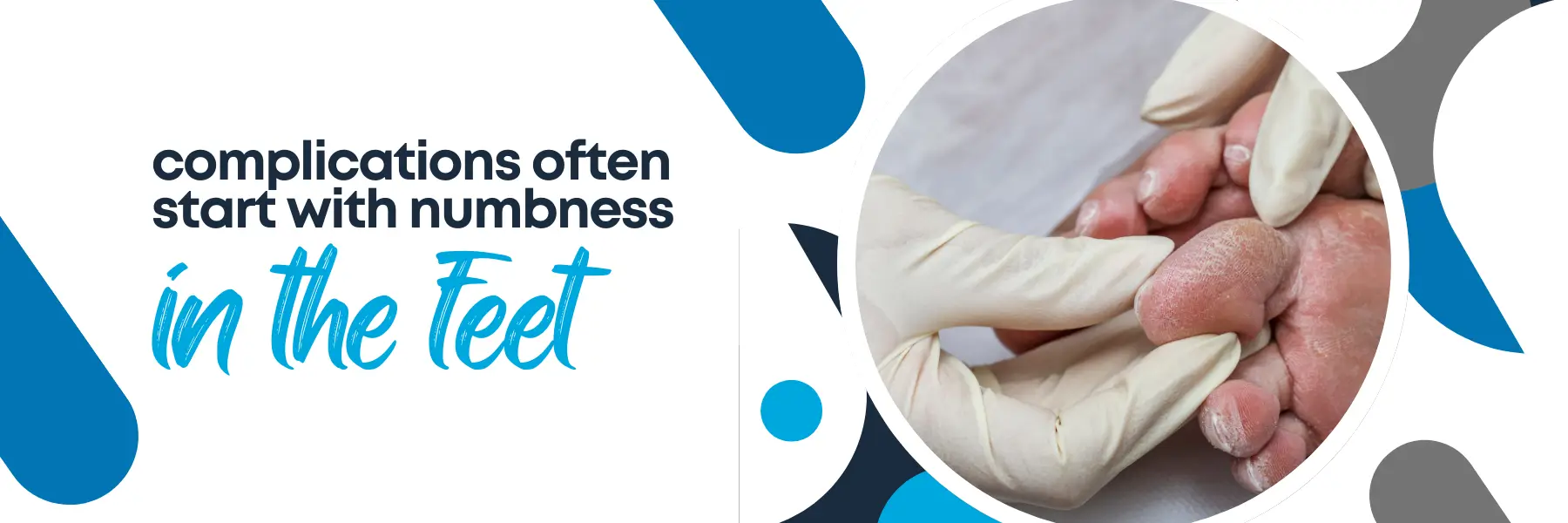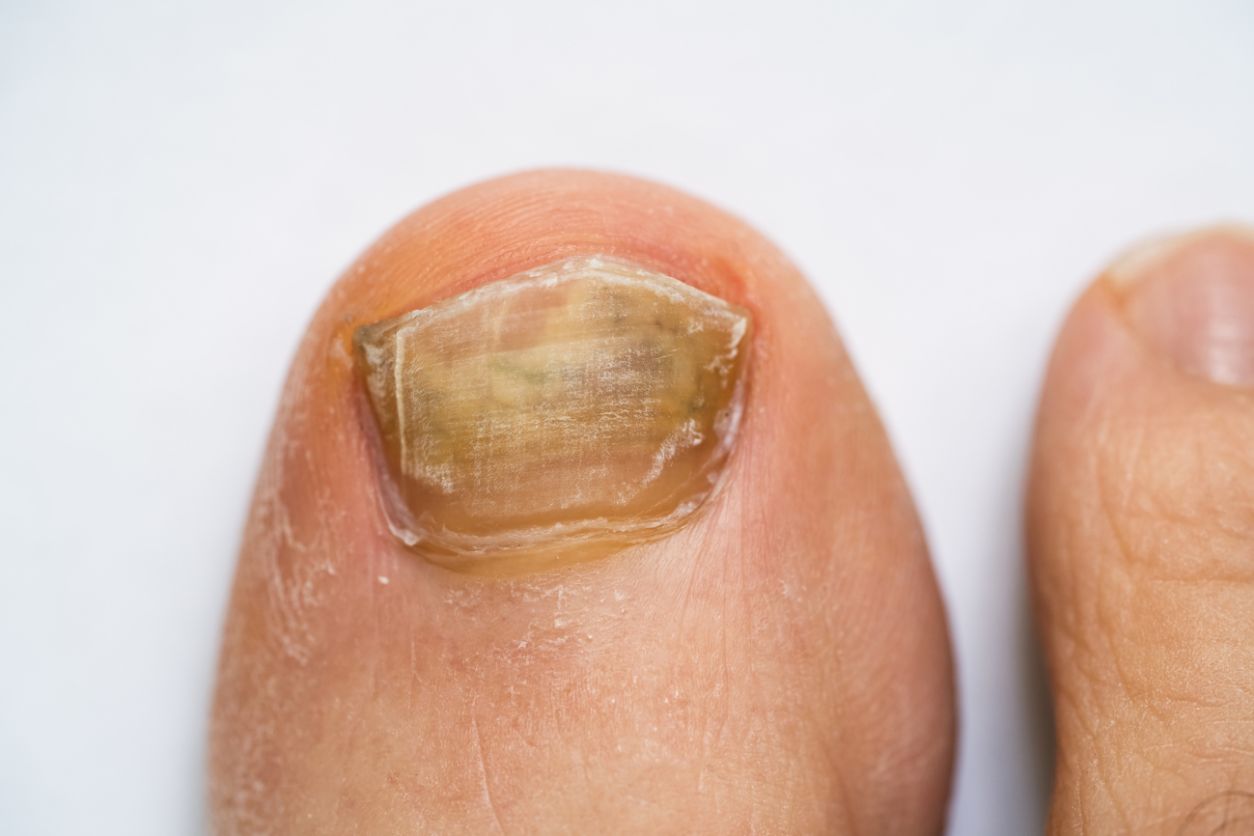Did you know that up to 15% of people in Australia with diabetes experience severe diabetes-related foot disease (DFD) complications in their lifetime?
It’s a startling statistic, but don’t panic.
Researchers have found that a little extra care and attention, as well as catching early warning signs, can make all the difference in avoiding most of these problems.
This blog highlights how protecting your feet from diabetic complications is much simpler than you think, helping you enjoy a healthy and active life.
What Causes Foot Diabetic Complications?
There are primarily two causes of diabetes-related foot conditions, as mentioned below.
- Diabetes-Related Neuropathy: It is a severe diabetic complication caused mainly by nerve damage. It makes you unaware or feel issues with your feet, which can lead to delayed diagnosis and treatment.
- Peripheral Artery Disease (PAD): Diabetes can affect arteries, reducing the blood circulation to your legs and feet. It can make healing of foot issues like sores and injuries more challenging.
How Can Diabetes Affect Your Feet?
People with diabetes have a high risk of foot-related problems due to high levels of blood sugar that often lead to nerve damage and poor circulation. The complications are generally known as diabetes-related neuropathy. Foot Diabetic complications can happen due to the effect of the following issues:
- Damaged nerves cause numbness in your feet, making it difficult for you to feel any scratches, wounds, or blisters until you face difficulty in moving.
- Diabetic individuals have a higher risk of skin infections due to poor blood circulation and weakened immune system.
- High sugar levels can damage macrophage cells which help heal infected tissues. As a result, it takes longer for wounds and scratches to heal.
- If infections are not treated timely, they can spread to other areas of your leg and lead to gangrene.
 Early Signs of Diabetes-Related Foot Complications
Early Signs of Diabetes-Related Foot Complications
Timely identification of early signs of diabetic foot problems and proper interventions can help you avoid the risk of major podiatric issues. Here, we will mention the early symptoms of foot diabetic complications you should watch for.
Skin Tingling
Nerves are affected by high blood sugar levels, known as Peripheral neuropathy. At the initial stage of this problem, you experience small and gradual changes in sensation, which add up over time.
An early sign of diabetic neuropathy is a sensation of tingling in the toes and feet as if you are walking with cardboard at the bottom of your feet.
Sometimes, your nerves become too sensitive to stress before they lose their sensitivity.
Loss of Sensation
Nerve damage in the feet can cause the loss of sensation. Diabetic complications often start with numbness in the feet.
This is why skin breaks, injuries, or sores become challenging to detect and might lead to more significant complications.
Patients are advised to check their feet regularly for any scratches, blisters, and punctures that otherwise remain unattended.
Change of Skin Color and Texture
High blood glucose levels can impact smaller blood vessels and can restrict normal blood flow. It causes the skin to become discolored, developing brown patches.
Early indications of inadequate blood circulation could be a toe that has changed color. You may also experience cold feet, less hair growth, cramping, and gripping pain in the calf muscles when walking.
Slow Healing of Wounds
Diabetes impairs the proper amount of blood flow in your legs and feet, which makes it hard for an infection to heal at a standard rate.
If you notice wounds on your feet that are not healing, seek medical attention for proper diabetic wound care.
Even minor cuts, blisters, or scratches take a longer time to heal and can lead to complications, especially when they are subjected to pressure and rubbing.
Fungal Infection
Diabetics can lead to chronic fungal infections because high blood sugar affects the body’s ability to fight pathogenic bacteria and fungi.
Especially your nails and areas between the toes are more prone to fungal infections.
You must regularly check your feet for any fungal growth and take appropriate actions.
Pain and Swelling
The associated problems with diabetes include occasional pain and swelling of feet and ankles. It may be caused by poor blood circulation and fluid retention.
The situation becomes more complicated when you can’t identify the cuts and blisters due to a lack of sensation, and when wounds can’t heal quickly.
Changes in the Shape of Feet
Although rare, damaged nerves can lead to a change in the shape of your feet. One of the major foot complications related to diabetes is Charcot’s foot. The early symptoms of this problem are redness, pain, and swelling.
You may also feel that one foot is warmer than the other. In the worst case, bones in your feet and toes can start to shift or deform, giving your feet an odd shape.
How to Prevent Diabetes-Related Foot Problems to Aggravate?
If you have diabetes, taking some simple yet effective steps helps you to prevent diabetic foot complications from happening and suffering you. These steps are as follows:
- Check your feet daily: Look between your toes and above and below your feet to check for any abnormalities or changes. Even if there is no pain or uneasiness, a daily check can help you spot problems early before they become major concerns.
- Wear well-fitted socks and shoes: Make sure your socks and shoes are not too tight and fit your feet properly. It helps avoid pressure points that can cause blisters or sores and prevent any infection from developing due to healing problems.
- Protect feet from extreme hot or cold temperatures: It is recommended not to expose your feet to hot and cold conditions and surfaces. In colder temperatures, wearing socks and insulated shoes will help keep your feet warm.
- Clean and moisturise your feet: Clean your feet with warm water and moisturise on top and below your feet with lotion. Avoid applying lotion between your toes because it might encourage fungal growth.
- Maintain proper blood flow to feet: Keep your feet elevated while sitting, wiggle your toes, and move your ankles up and down. Choose physical activities that are easier on your feet, like yoga, walking, cycling, or swimming.
- Make an annual visit to a podiatrist: At least once a year, get a thorough foot health assessment by specialists, including a check of the feeling and pulses in your feet.
Conclusion
Identifying early signs of foot complications has to be a part of your daily routine, especially if you are diagnosed with diabetes.
Regular foot checks, proper care, and timely medical intervention can make all the difference in avoiding infections, ulcers, or other major issues. It’s all about being vigilant and proactive before symptoms worsen.
To address any issues with your feet, Sydney Foot Clinic is here to help. We offer the latest treatment options and personalized care to ensure your foot health is restored and maintained.
Don’t wait for symptoms to worsen, book an appointment today with our expert team and take the first step toward healthier, happier feet. Your foot care journey starts here!




